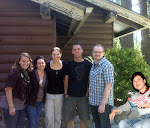Monday, May 10, 2010
Malawi Overview
Malawi is a landlocked country located in southeast Africa that is surrounded by Mozambique, Zambia, and Tanzania. Lake Malawi occupies nearly all of the country's eastern border. The north-south Rift Valley is flanked by mountain ranges and high plateaus. In the higher elevations, Malawi is pleasantly cooler than many other African countries, but the lowlands are hot, humid, and tropical. Natural resources include limestone, hydropower, uranium, coal, and bauxite.
More than 80 percent of people live in rural areas and are engaged in farming. Agriculture products include corn, sugarcane, cotton, tea, vegetables, nuts, cattle, and goats. More than 65 percent of Malawians live below the poverty threshold, and the inflation rate is 30 percent. Malawi is a very poor and densely populated nation that is categorized as one as one of the world's least developed countries, ranking 165 out of 177 on the human development index. Despite attempts at economic reform, the government continues to face challenges due to a rapidly growing population, the increasing number of HIV and AIDS cases, limited and poorly managed natural resources, recurrent droughts, environmental degradation, and food insecurity.
In May 2004, Bingu wa Mutharika, an economist, was elected president. The economy of Malawi relies on substantial economic assistance from the IMF, World Bank, and other nations. The government is attempting to develop a market economy, improve educational facilities, and address environmental issues, as well as deal with the escalating problem of HIV and AIDS.
The HIV and AIDS pandemic have had a significant impact on Malawi, where the prevalence rate among adults is 14.2 percent.
Subscribe to:
Posts (Atom)


